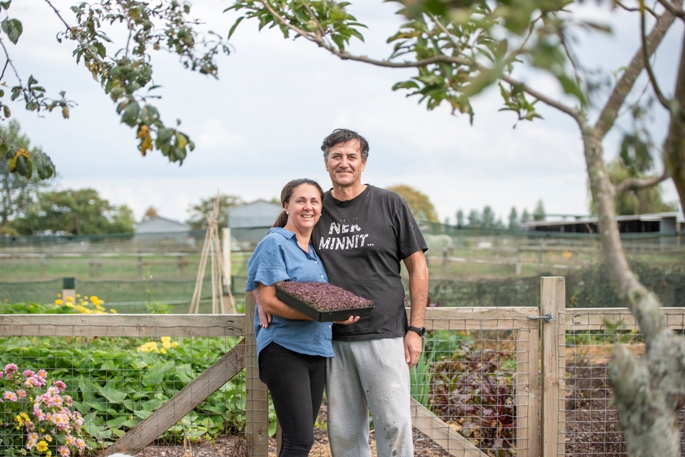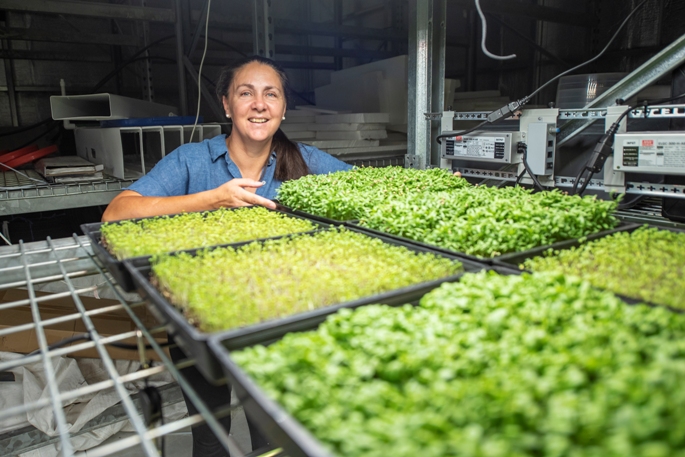When Melony and Dave Bencetti bought their 1600 square metre Matamata property in November 2019, they expected to have their hydroponic plant and vegetable business up and running soon after.
Instead, as Covid-19 hit the world, they found themselves unable to procure some of the equipment they needed, and were faced with weeks when no workmen could come onsite.
“Our 156 square metre warehouse was already built, so using the materials we had, Dave and I did as much as we could ourselves during lockdown,” say Melony.
The warehouse contains a growing room, processing room and office.
“We also decided to work with what we had, and grow microgreens, instead of waiting to grow hydroponically. We were in production by January 2021.”
Melony is a fan of the highly nutritious, few day old seedlings.
Tiny plant, big nutrition
“Numerous studies have shown that depending on the variety, microgreens are four to 40 times more nutritious than the fully grown vegetable.
“They grow in 10 days, are more sustainable, use less space, and less water, it’s a no-brainer really.”
The growing room is lined with reflective insulation and has no natural light. Low energy specialist LED growing lights simulate sunlight at the touch of a button, utilising the best electricity cycles.
“We’ve got excellent air flow, with distribution ducting throughout and whirly birds in the ceiling. Extra fans and an air extraction system combat fluctuating external temperatures.”
Organic growing
Melony uses Daltons organic seedling mix, putting one centimetre of soil in the bottom of small, plastic punnets, which are returned by customers and re-used.
Regularly researching the most current nutrition value information, Melony experiments with different seed varieties and mixes to find the tastiest options.
“All my seeds are organic or untreated, from Kings or South Pacific.”
Large new water tanks collect from the warehouse roof, and the water is filtered before use. To produce 40 regular seed trays of microgreens weekly, around 60 litres of water is used.
The microgreens are sold in their punnets of soil.
Timely eating
“Cutting a microgreen means their nutrient content drops away after two or three days, but all the time it’s still growing, it retains its nutrient value.
“They are harvested by the customer, and can be stored in their fridge and watered.”
Plant health and hygiene are essential, and the correct growing room conditions ensure mould, disease or bugs are not allowed to thrive.
Melony’s growing cycles are timed to have the microgreens ready for each weekend’s Farmers Markets. She uses refrigeration, and light or darkness to stall or accelerate growth as required.

Melony and Dave Bencetti and a tray of radish microgreens. Photo: Catherine Fry



0 Comments
Leave a Comment